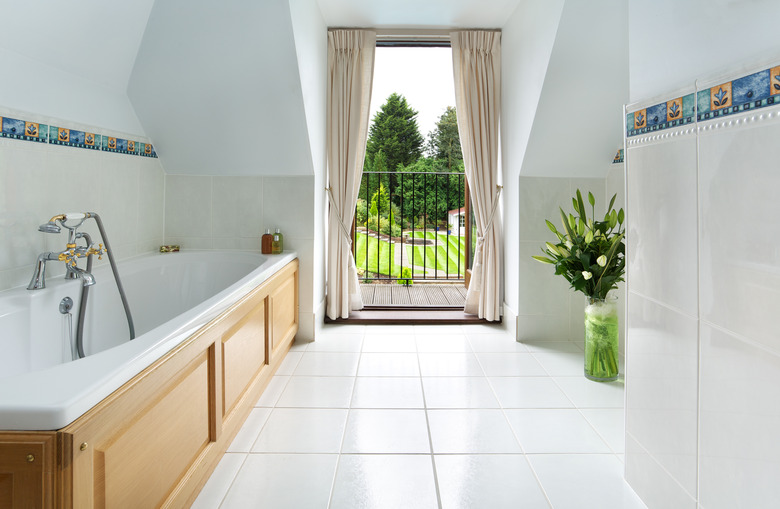What Kind Of Wax Can I Use On A Porcelain Tile Floor?
We may receive a commission on purchases made from links.
Porcelain tiles are an excellent choice for flooring. They are easy to maintain and also remain durable over the years. As with any other type of flooring, regular maintenance, such as applying sealant, is important to make your flooring last as long as possible. Using a sealant will protect your porcelain tiles and grout from stains and will also make cleaning a breeze.
Use Sealant, Not Wax
Use Sealant, Not Wax
Using wax on porcelain tiles might seem like the logical choice to protect them; however, wax is not the route you should choose. Waxing glazed tiles, such as porcelain tiles, will not achieve the final protection you desire. The tile will not absorb the wax, therefore rendering the wax application useless. The grout will accept the wax product, but it is likely to discolor the grout and result in a place where bacteria can collect and reproduce. Using a sealant is the best choice, as this will not only protect the tiles but the grout as well.
Types of Sealant
Types of Sealant
The type of sealant to use can be determined according to the type of finish you wish to have on your porcelain tiles. GlazeGuard offers a porcelain tile sealer with a gloss, satin, or matte finish that will leave a protective barrier on your floor and will be resistant to chemicals, water, and other things that might soil your flooring. There is also a slip-resistant option that can be used or added as a second layer if you are worried about the surface being too slippery.
Prepping the Floor
Prepping the Floor
Before applying sealant to porcelain tile, the floor needs to be meticulously cleaned. The sealant is a layer that will sit on top of your tile, creating a finished surface on your floor. Dirt, crumbs, and stains on the tile or grout that are not removed before the sealant is applied will remain there, and you will be unable to be remove them afterward.
First vacuum the surface of the floor to remove any debris. Then wash the floor and grout thoroughly using 1/4 cup of vinegar in 2 gallons of water and a mop. This homemade cleaning solution should remove any stuck-on spots. However, if you notice any particularly difficult stains, you may need to remove them with a specially formulated commercial cleaner, carefully following the directions on the product label.
Applying the Sealant
Applying the Sealant
Apply the sealant according to the method described on the product label. If the label doesn't mention a preferred method, then a rag, an applicator, or a small paint roller should do the trick. The goal is to do small areas at a time, being meticulous about the amount of product being applied to the tiles. There should be an even layer of product on the tile and the grout so they are equally protected.
Let the sealant rest on the surface for a few minutes and wipe away any extra product with a clean, dry cloth. If the sealant sits on the surface for too long, it will have a sticky finish that will need to be rectified with more product to create a smooth surface. Let the sealant dry for approximately an hour before walking on the tile.
